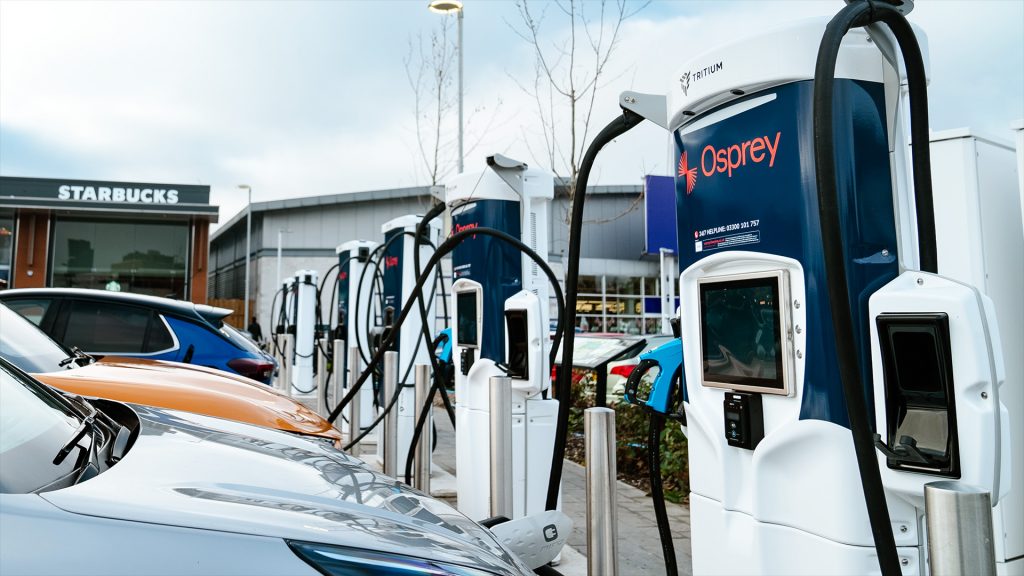Last updated on April 18th, 2022 at 04:41 pm
More EVs were sold in 2021 than in the previous decade. With close to 450,000 EVs on our roads today, the 30,000 public chargers that are available to the public are clearly not enough. To help bridge the gap, the Government has confirmed a direct contribution of £450 million alongside a massive investment from the private sector. This programme has been driven by the Secretary of State for Transport, Grant Shapps, and has been applauded by industry leaders like Ian Johnston from Osprey Charging. WhichEV looks at the details and evaluates the impact this money is likely to have.
Without convenient, affordable and reliable charging, the Government's drive toward its pollution targets will falter. Success will come through easier payment systems as well as more reliable hardware and infrastructure. However, the single biggest factor will be the sheer number of charger locations that are available. Announcing a target of 300,000 charger points by 2030 is certainly setting the right tone – as the 30,000 presently available are clearly not enough
Most of the Government's investment will focus on EV hubs and innovative on-street charging – to try and help ensure that the EV revolution doesn't leave anyone behind. It also gives the Government a chance to show its commitment to ‘Levelling Up'. Right now, almost 46% of the UK's public chargers are in London and the South East (according to Zap-Map). Drivers in the East Midlands, Yorkshire, North East and Wales will be sceptical about making the switch away from fossil fuels, until a proven network can be shown to be working.
Osprey Charging is one of the UK's fastest growing networks and focuses solely on rapid charger hubs. CEO Ian Johnston responded to the Government's announcement saying, “This is an important step towards ensuring that we have the right number of charging points in all locations across the UK. This is crucial to give everyone the confidence that when they make the switch to electric, they will be able to charge as easily as they refuel today – whenever and wherever they are. These charging stations simply must be reliable, easy to navigate and importantly, accessible for all.”
“There are already many billions of pounds of private investment committed for the deployment of charging infrastructure across the UK from leading networks like Osprey, and the announcements today will allow this funding to provide the critical infrastructure to the areas that are as yet under-served – notably the motorway service areas and the Local Authority towns and cities across the nation. We look forward to working with the government to help bring this strategy to life, delivering a high quality, inclusive, open-access and reliable charging network that’s worry free, comfortable and enjoyable to use.”
Another area of concern will be commitment and investment in charger destinations that will support Motability users. Regular charger points are often totally inaccessible for wheelchair users and this is something that is being addressed. Investing in new chargers and infrastructure is a good thing, but it's crucial that providers are working toward the new BSI standards for accessible charging.
Barry Le Grys, Chief Executive Officer at Motability says, “There is a risk that disabled people are left behind as the UK’s transition to electric vehicles approaches and Motability wants to ensure that this does not happen. Motability looks forward to a future where electric vehicle charging is inclusive for all.”
With almost 1 in 5 new vehicles being registered having an electric motor, the momentum in this area of the market has been well and truly generated. Coupled with massive instabilities in the supply and cost of fossil fuels, the announcement comes at the perfect time. Mike Hawes, Chief Executive for the Society of Motor Manufacturers and Traders (SMMT), said this investment should be coupled with binding targets for deployment.
“Charging infrastructure must keep pace with the rapid growth of sales of these cars,” said Hawes. “Deployed nationally and at pace, this expansion would give drivers confidence that they will be able to charge as easily as they would refuel, wherever they are.”
Overall, this represents the first deliverable in the Government's Ten Point Plan for a Green Industrial Revolution that was first revealed in November 2020.
